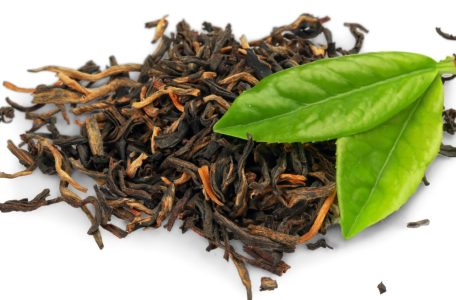Dietary inclusion of antibiotics for growth promotion in farm animal production has be a common practice for several decades. Resulting in increased efficiency levels in animal production.
- However, the use of antibiotic growth promoters has been widely associated with the promotion and/or selection of antibiotic-resistant microorganisms in farm animals (Chattopadhyay, 2014).
Extensive research has been conducted over the past two decades to look for natural alternatives to antibiotics in feed. Plant compounds (or phytogenic compounds) have been attributed as great potential alternatives to AGPs (Yang et al., 2015).
Chemical structure and presence of tannins
Tannins are a heterogeneous group of phenolic compounds with diverse structures that share their abilities to bind and precipitate proteins.
They are usually classified into 3 main groups:
- Hydrolyzable tannins (HT)
- Condensed tannins (CT) (also called proanthocyanidins)
- Phlorotannins (PT)
The first 2 groups are found in terrestrial plants while PTs are found only in marine brown algae.
Tannins are widely distributed amongst the plant kingdom, being especially abundant in nutritionally important forages, shrubs, cereals and medicinal herbs (Salunkhe et al., 1982, Wang et al., 1999).
Tannins tend to be more abundant in the vulnerable parts of plants, e.g., new leaves and flowers (Terrill et al., 1992, Van Soest, 1982, Frutos et al. , 2004).
Chemical structures and tannin concentrations vary greatly between plant species, growth stages and growth conditions.
Biological activity of tannins
Tannins serve as part of the plant’s defense system against pathogen invasion and insect attacks. Thest possess numerous biological activities, such as:
- Antimicrobial properties
- Antiparasitic properties
- Antioxidant capacity
- Antiviral properties
These activities vary greatly depending on the chemical composition and structure of tannins. As well as due to other factors like: microorganism species, growth stages and/or host species (Hoste et al., 2006, Hoste et al. , 2012).
Use of tannins in ruminants
[register]Tannins, especially CTs, are widely distributed in nutritionally important forages, trees, and shrubs.
Condensed tannins may have beneficial or harmful effects for ruminants, depending on:
- The amount consumed by the animals
- Type and chemical structure
- The composition of the rest of the diet (especially the concentration of CP) (Mueller-Harvey, 2006)
It is generally believed that the presence of CTs in tempered forages at low to medium concentrations (<50 g/kg DM) can benefits ruminant by improving protein utilization, without negatively affecting feed intake nor nutrient digestibility (Barry and Mcnabb, 1999, Waghorn, 2008).
Their capacity to precipitate proteins, as well as their antimicrobial, antiparasitic and antioxidant activities are probably the main reasons to consider the inclusion of tannins in ruminant diets.
Waghorn (2008)showed that when feeding forages as a single diet, an amount of approximately(30 g TC/kg DM) condensed tannins in L. corniculatus proved to be beneficial for ruminant production. On the other hand, CTs found in Hedysarum coronarium and L. pedunculatus ( with concentrations greater than 50 g/kg DM) did not seem to offer any other productivity benefit than mitigating parasite impacts.
Probably the most successful application of dietary tannins in ruminant production is for the reduction of foamy tympanism. This condition is characterized by gas buildup within the rumen and reticulum, which affects both digestive and respiratory functions(Wang et al., 2012).
Many factors can contribute to the onset of tympanism. However, the rapid lysis of legume plant cells such as alfalfa and the release of proteins from plant cells within the rumen,are a major contributing factor. As they increase the viscosity of rumen fluid.
- Tannins precipitating protein during chewing and rumination reduce the solubility of protein in the rumen, which reduces potential swelling.
- Therefore, forages containing tannins are considered as “tympanism-free”.
Li et al. (1996) have estimated that concentrations as low as 1.0 mg CT/g DM can prevent grass swelling.
- Hoste et al. (2006) summarized a set of in vivo studies where tannins found in sainfoin (Onobrychis viciifolia), L. pedunculatus, Sericea lespedeza, Acacia nilotica and chicory had significant anthelmintic effects in: sheep, goats and deer.
Challenges of using tannins as an alternative to antibiotics in animal feed
The aforementioned information demonstrates that although plant tannins evidence strong antibacterial and antiparasitic action in vitro, their in vivo effects can vary significantly.
Many factors such as:
- Variations in the chemical composition of products due to differences in plant sources
- Growing conditions
- Processing methods
- Different methods of application and feeding conditions
contribute to this great variability.
Due to the complexity of these issues, systematic and comprehensive evaluations on the efficacy and safety of these compounds are difficult. This scenario hinders the adoption of tannins and products containing tannins as viable alternatives to antimicrobial growth promoters within the animal production industry.
Most of the tannins which are currently used in the animal industry are crude extracts from mixtures of different molecular sizes or whole plants with a wide variety of secondary compounds.
- This, added to variations in chemical composition and compound structures from different sources. As well changing growth conditions, can reduce the likelihood of microorganisms becoming resistant to complex tannins.
However, little research has been done in this area up until now. Therefore, it is necessary that both the scientific community and the production industry make joint efforts to prevent microorganisms from developing resistance to tannins and other secondary plant compounds. As these represent important tools for human health, and the risk of new resistant microbial strains would have severe implications for humanity.
[/register]
